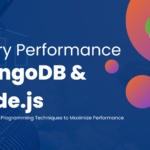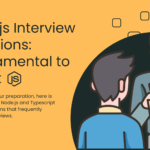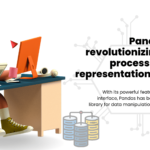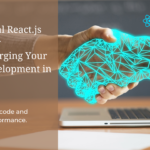Hey, future AI maestros! 🤖✨ In the rapidly evolving landscape of today’s digital era, coding has emerged as a foundational skill, shaking industries and opening doors to big opportunities. Whether you’re looking to pursue a career as a web developer or simply want to explore the world of programming as a hobby, starting your coding journey can seem overwhelming at first.
Fear not BuzzCoders! this beginner’s guide is crafted to ease up the complexities, making coding accessible to everyone, irrespective of a formal computer science background. So let’s explore the essential steps to initiate your coding journey, with a particular focus on the fascinating realm of AI (Artificial Intelligence) programming.
Let’s demystify the world of code together!
Why Learn to Code?
Before diving into the technical aspects of coding, it’s important to understand why learning to code can be valuable. Coding is not just about writing lines of text; it’s about problem-solving and creating innovative solutions. By learning to code, you gain the ability to build websites, develop applications, and even create AI-powered systems that can make a real impact in various industries.
Additionally, the demand for skilled programmers is continuously growing. With the rapid advancements in technology, industries such as healthcare, finance, and education rely heavily on software and AI-driven solutions. By acquiring coding skills, you position yourself for a wide range of career opportunities in these thriving fields.
Choosing the Right Learning Path
When starting your coding journey, it’s essential to choose the right learning path that aligns with your goals and learning style. There are various approaches to learning coding, including online courses, coding boot camps, and self-study. Let’s explore each option in more detail.
1. Online Courses
Online courses have become increasingly popular for learning coding, offering flexibility and accessibility to individuals of all backgrounds. Platforms like Coursera, Udemy, and Codecademy offer a wide range of coding courses, including AI-focused programs.
These courses provide structured learning materials, video tutorials, and hands-on coding exercises to help you grasp the fundamentals of programming and AI concepts.
2. Coding Bootcamps
If you’re looking for an immersive and fast-paced learning experience, coding bootcamps can be a great option. Bootcamps like Coding Dojo provide intensive training programs that cover multiple programming languages, including AI-related technologies.
On the other hand, if you prefer a more structured approach with certifications, SimpliLearn is an excellent choice. It covers a spectrum of AI topics, including machine learning, deep learning, reinforcement learning, NLP, generative AI, prompt engineering, and ChatGPT. The AI Bootcamp from SimpliLearn provides live classes led by industry experts, hands-on labs, industry-focused projects, and masterclasses conducted by instructors from Caltech.
These programs are designed to equip you with the practical skills needed to kickstart your career as a web developer or AI engineer.
3. Self-Study
For those who prefer a more flexible and self-paced learning approach, self-study can be an effective way to learn coding. There are numerous online resources, tutorials, and books available that cater to beginners.
Websites like W3Schools, Mozilla Developer Network, and freeCodeCamp offer comprehensive and interactive learning materials for various programming languages, including those relevant to AI development.
The official documentation of AI libraries and frameworks like TensorFlow, PyTorch, and scikit-learn is a valuable resource for learning the intricacies of AI development. These resources provide comprehensive guides, tutorials, and examples to help you understand and implement AI algorithms.
Joining online communities dedicated to AI development, such as Reddit’s r/MachineLearning and Stack Overflow, can provide you with a platform to ask questions, share ideas, and learn from experienced AI developers. These communities often have active discussions and valuable insights into the latest trends and techniques in AI.
Books like
- “Hands-On Machine Learning with Scikit-Learn, Keras, and TensorFlow” by Aurélien Géron and
- “Deep Learning” by Ian Goodfellow, Yoshua Bengio, and Aaron Courville
It is highly recommended for in-depth learning of AI concepts and algorithms.
4. AI Blogger/Authors to Follow
Essential Tools and Software
To start coding, you’ll need the right tools and software. While advanced programming environments can be used for AI development, beginners can start with simple and accessible options. Here are the essential tools you’ll need:
- Text Editor: A text editor is where you’ll write your code. It’s recommended to use a code-focused text editor like Visual Studio Code (my favourite 🏆), Sublime Text, or Atom. These editors provide features like syntax highlighting, code completion, and easy navigation, making it easier for beginners to write and edit their code.
- Integrated Development Environment (IDE): An IDE is a more advanced software that combines a text editor, compiler, and debugger in one package. While not necessary for beginners, using an IDE like PyCharm or Eclipse can enhance your coding experience as you progress and work on more complex projects.
- Command Line Interface (CLI): The command line interface, also known as the console, is a powerful tool for executing commands and running programs directly from your computer’s terminal. Familiarizing yourself with the basics of CLI will prove to be invaluable as you advance in your coding journey.
- Web Browsers: Web developers, in particular, need to have access to popular web browsers like Google Chrome, Mozilla Firefox, and Safari. These browsers come equipped with developer tools that allow you to inspect and debug web pages, making the development process smoother.
Choosing the Right Programming Language for AI Development
With numerous programming languages available, it’s essential to choose the right one for AI development. While AI can be implemented using various languages, some are more commonly used in the field. Here are a few programming languages you should consider learning:
- Python: Python is widely regarded as one of the best programming languages for AI development. It has a simple syntax and a vast collection of libraries and frameworks, such as TensorFlow and PyTorch, that make it ideal for machine learning and data analysis tasks.
- JavaScript: JavaScript is primarily used for web development, but it also has libraries and frameworks like TensorFlow.js that allow for AI development directly in the browser. Learning JavaScript will give you the flexibility to work on both front-end web development and AI projects.
- Java: Java is a versatile programming language used in various domains, including AI. It has a robust ecosystem and offers libraries like Deeplearning4j that enable Java developers to build AI-powered applications.
- R: R is a specialized programming language for statistical computing and data analysis. It has extensive libraries and packages, making it a popular choice for AI tasks involving data manipulation and visualization.
While these languages are commonly used in AI development, it’s important to note that the choice of programming language may depend on the specific AI task or project you’re working on. Exploring multiple languages and frameworks will broaden your skill set and enable you to tackle different AI challenges.
Learning Resources for AI Development
Once you’ve chosen a programming language, it’s time to explore the learning resources available for AI development. Here are some of the best resources to consider:
- Statistics:
- Websites:
- User Blog:
- Towards Data Science on Medium – Various articles on statistics and data science.
- Mathematics:
- Websites:
- User Blog:
- BetterExplained – Simplifying math concepts, including those relevant to AI.
- Programming:
- Websites:
- User Blog:
- Real Python – Practical Python programming tutorials.
- Data Structures:
- Data Manipulation:
- Websites:
- User Blog:
- Towards Data Science on Medium – Numerous articles on data manipulation with pandas.
- Data Science:
- Websites:
- Coursera – Data Science Specialization
- Analytics Vidhya – Various data science resources.
- User Blog:
- Data Science Central – A community for data science professionals.
- Websites:
- Machine Learning:
- Websites:
- Coursera – Machine Learning by Andrew Ng
- Fast.ai – Practical deep learning for coders.
- User Blog:
- Machine Learning Mastery by Jason Brownlee – Practical advice on machine learning.
- Websites:
- Deep Learning:
- Websites:
- User Blog:
- Sebastian Ruder’s Blog – In-depth articles on various deep learning topics.
Building Your First AI Project
Once you have a solid understanding of AI concepts and programming, it’s time to put your skills to the test by building your first AI project. Here’s a step-by-step guide to get you started:
- Define Your Project: Identify a problem or task that can be solved or enhanced using AI. It could be anything from sentiment analysis of social media data to image recognition.
- Gather Data: Collect or find relevant data that will be used to train your AI model. Ensure the data is diverse, representative, and properly labeled.
- Preprocess and Clean Data: Clean the data and prepare it for training by removing duplicates, handling missing values, and normalizing the data.
- Choose an AI Algorithm: Select an appropriate AI algorithm that suits your project requirements. This could be a machine learning algorithm like linear regression, a neural network architecture like convolutional neural networks, or a natural language processing technique like sentiment analysis.
- Train and Test Your Model: Split your data into training and testing sets. Use the training set to train your AI model and evaluate its performance on the testing set. Iterate and fine-tune your model until you achieve satisfactory results.
- Deploy and Evaluate Your Model: Once your model is trained, deploy it in a real-world environment and evaluate its performance on unseen data. Monitor and gather feedback to continuously improve your model.
- Continued Learning and Iteration: AI is a rapidly evolving field, so it’s important to stay updated with the latest advancements. Continuously learn and explore new techniques, algorithms, and frameworks to enhance your AI development skills.
Some ideas for AI project
Here are three ideas to get started on learning and building your first AI project:
- Image Classification with Convolutional Neural Networks (CNNs):
- Idea: Create an image classification model that can identify objects or patterns within images.
- Steps to Get Started:
- Learning Focus: Begin by learning the basics of deep learning and convolutional neural networks (CNNs).
- Data Collection: Gather a dataset for training your model. Datasets like CIFAR-10 or MNIST are suitable for beginners.
- Implementation: Use a deep learning framework like TensorFlow or PyTorch to implement a CNN model.
- Training: Train your model on the dataset and evaluate its accuracy.
- Deployment: If interested, explore deploying your model to make predictions on new images.
- Natural Language Processing (NLP) – Sentiment Analysis:
- Idea: Develop a sentiment analysis model that can analyze and classify the sentiment (positive, negative, neutral) of text data.
- Steps to Get Started:
- Learning Focus: Familiarize yourself with the basics of natural language processing and sentiment analysis.
- Data Collection: Find a dataset with labeled text data for sentiment analysis. Websites like Kaggle often have relevant datasets.
- Implementation: Use NLP libraries like NLTK (Natural Language Toolkit) or spaCy along with machine learning techniques to build your sentiment analysis model.
- Training: Train your model on the dataset and assess its performance.
- Application: Consider creating a simple web interface or application where users can input text, and your model provides sentiment analysis.
- Predictive Analytics with Regression:
- Idea: Build a predictive model using regression techniques to forecast numerical values based on historical data.
- Steps to Get Started:
- Learning Focus: Learn the fundamentals of regression analysis and predictive modeling.
- Data Collection: Find a dataset with historical numerical data. For instance, you could explore stock prices, temperature trends, or sales data.
- Implementation: Use a tool like Python with libraries such as scikit-learn to implement a regression model.
- Training: Train your model on the historical dataset and validate its accuracy.
- Visualization: Visualize the predictions against the actual values to understand the model’s performance.
Remember, the key is to start with a project that aligns with your interests and gradually increases in complexity as you become more comfortable with the concepts and tools. Each of these projects allows for hands-on experience and provides a solid foundation for diving deeper into the world of AI.
Conclusion
Embarking on your coding journey, particularly in the field of AI development, can be an exciting and rewarding endeavor. By following the steps outlined in this guide, you can start learning to code, choose the right programming language, explore relevant resources, and build your first AI project.
Remember, coding is a continuous learning process, so stay curious, practice regularly, and never stop exploring the fascinating world of AI development. Good luck on your coding journey!
Happy coding!






